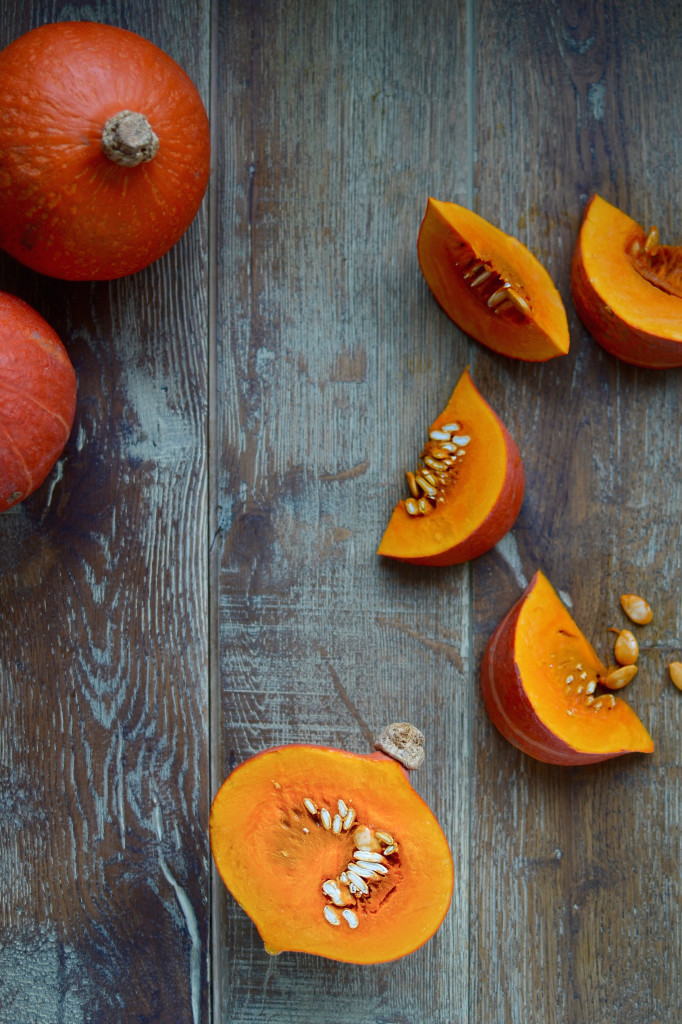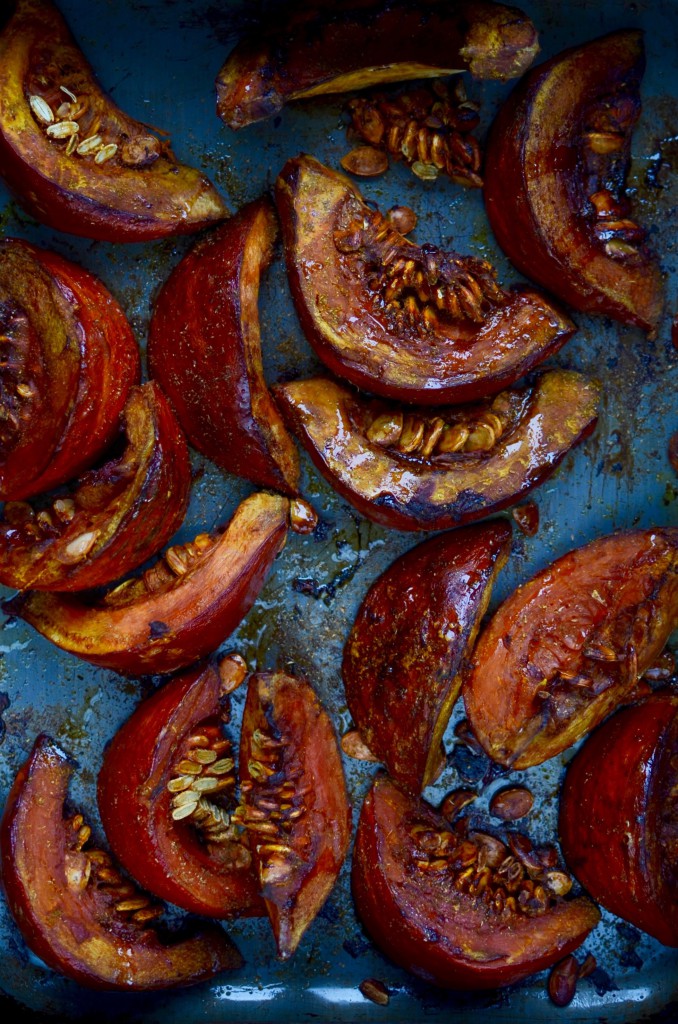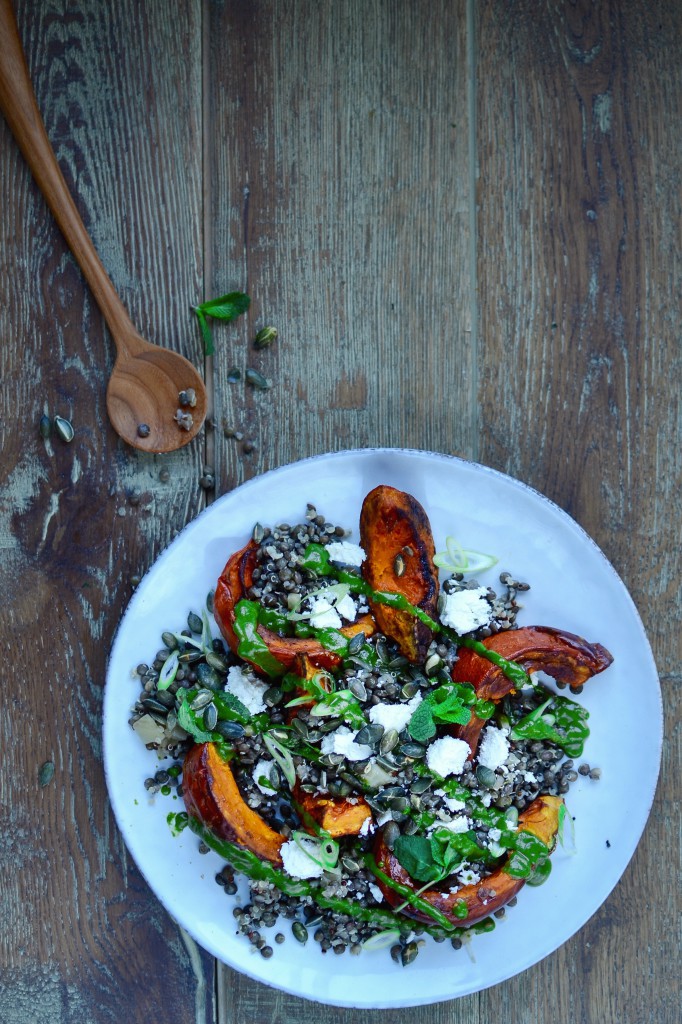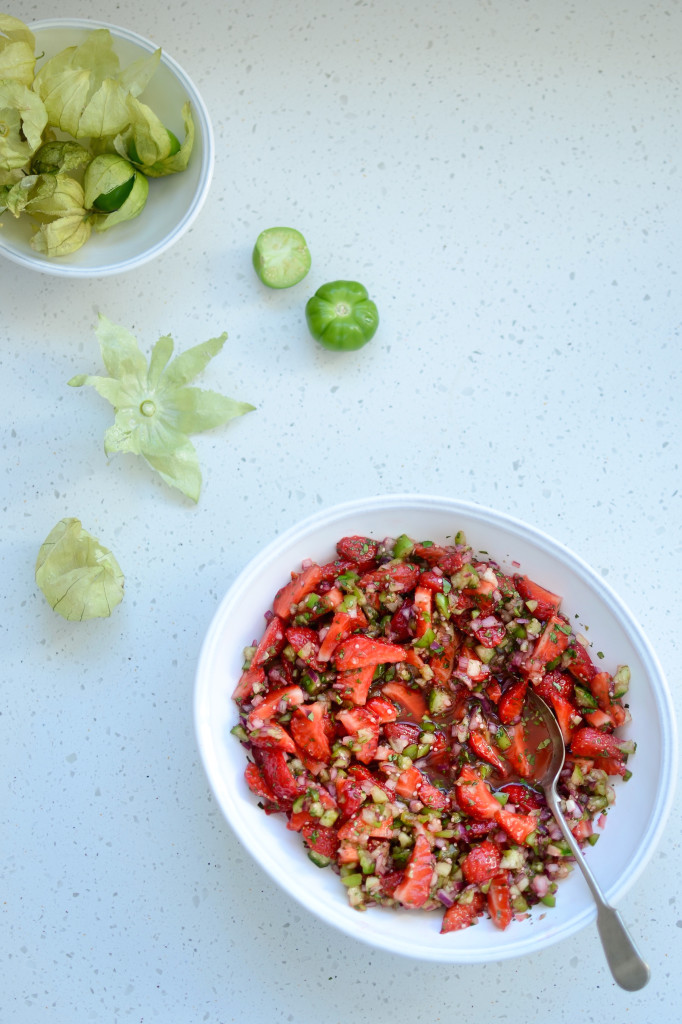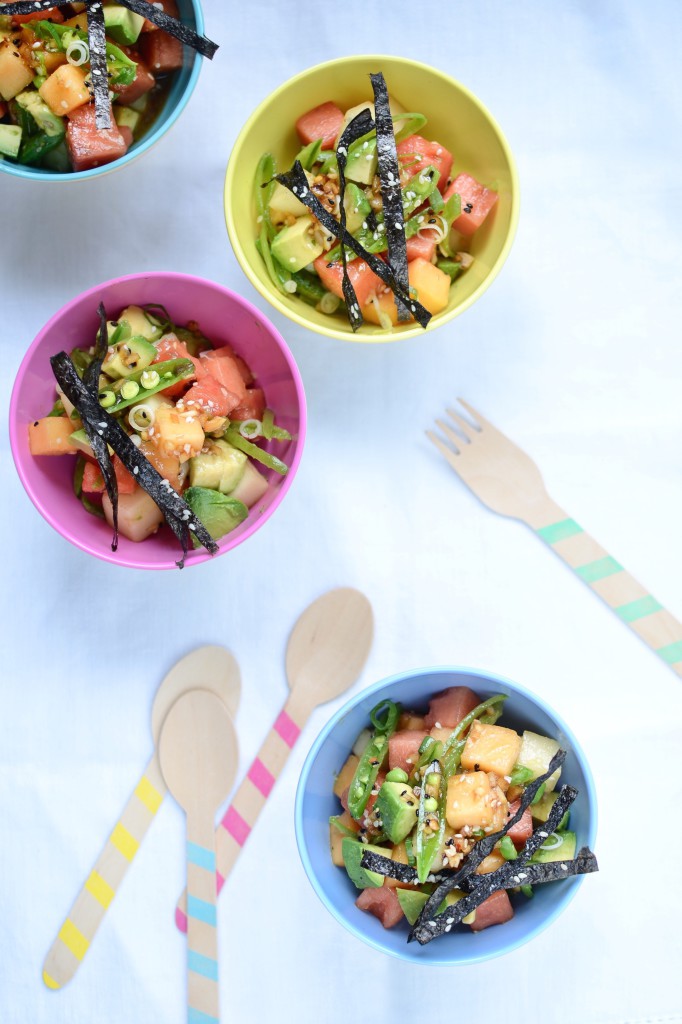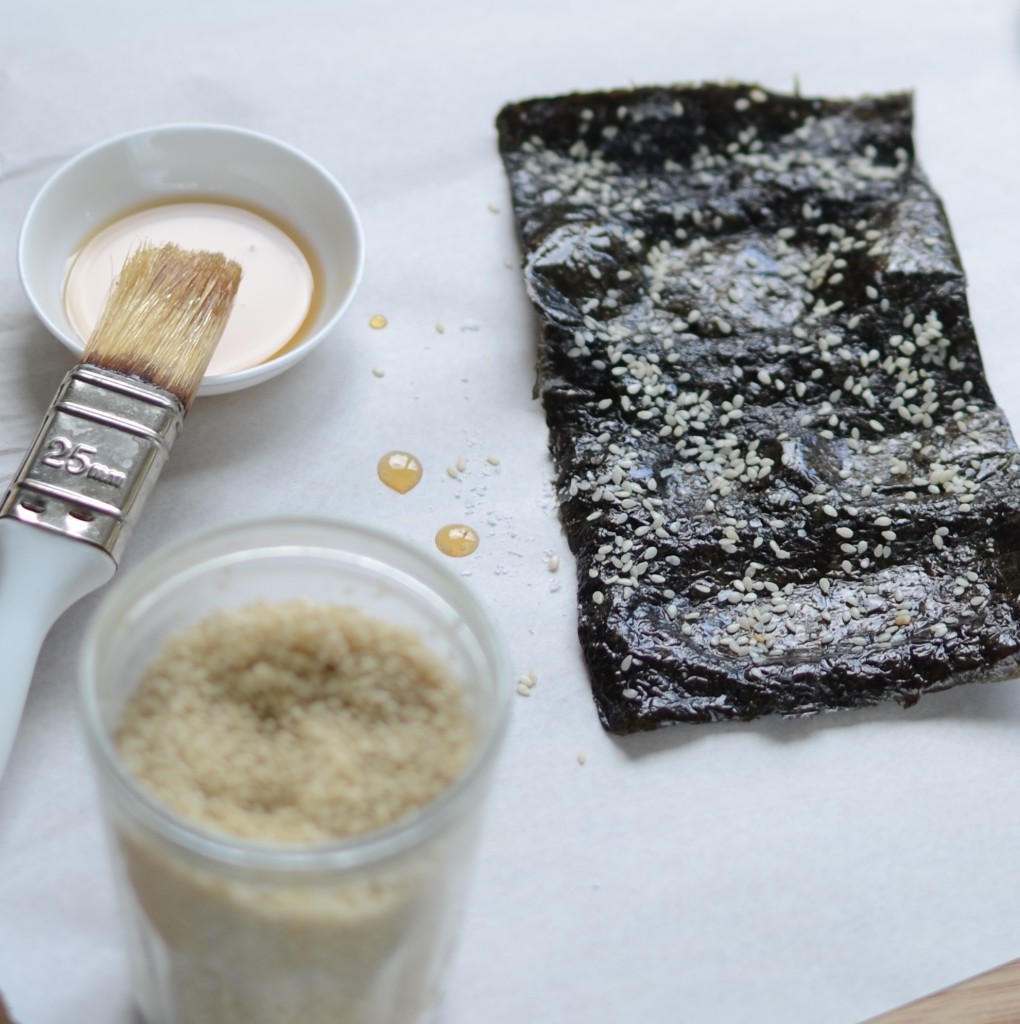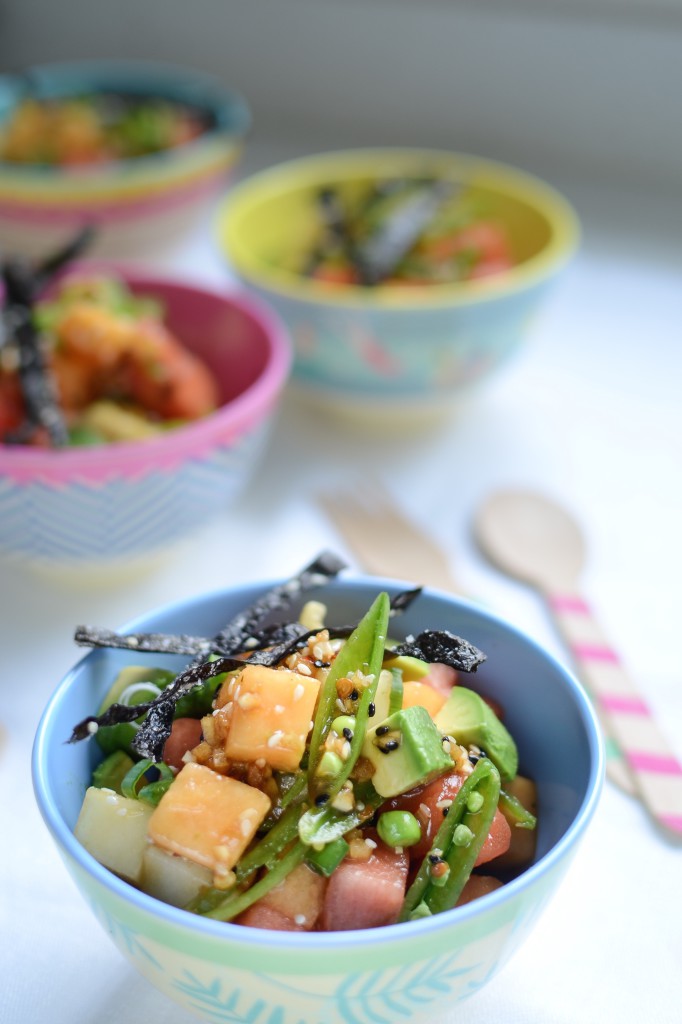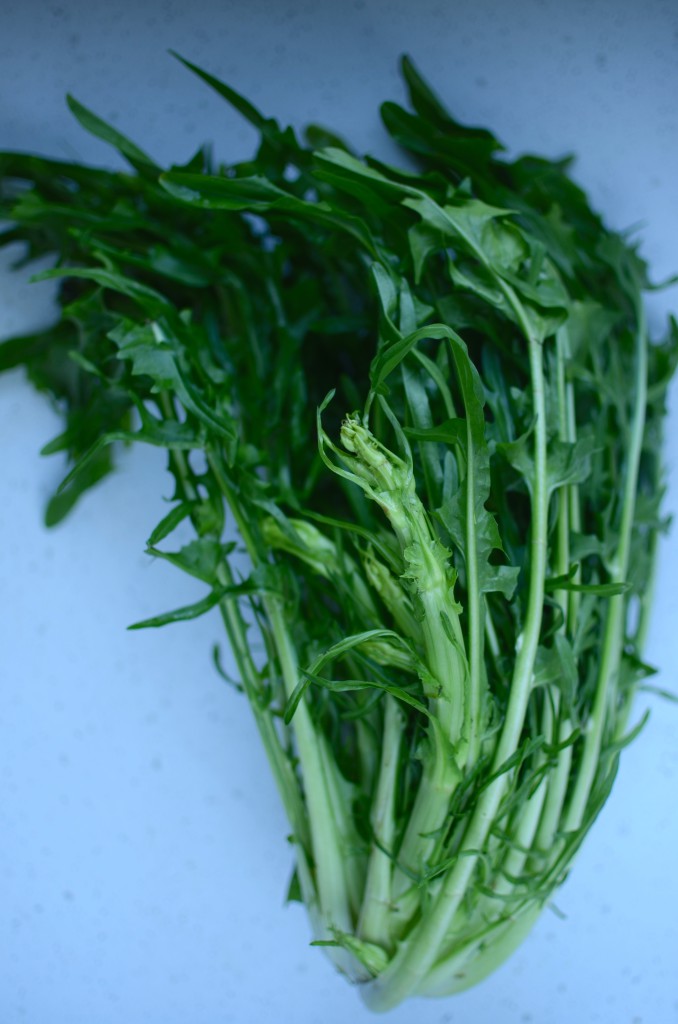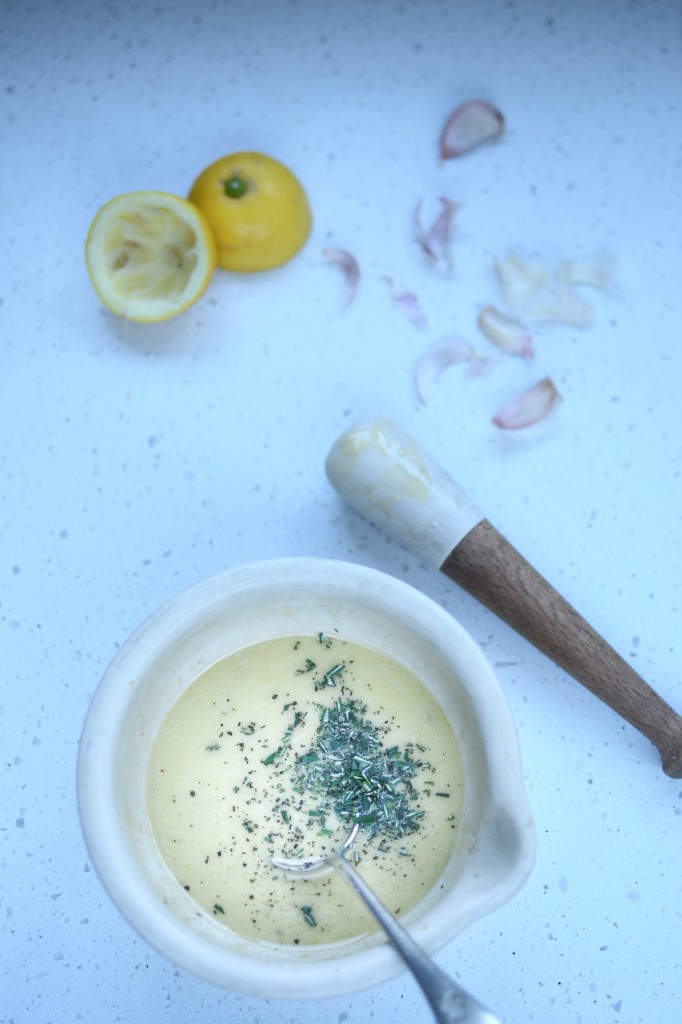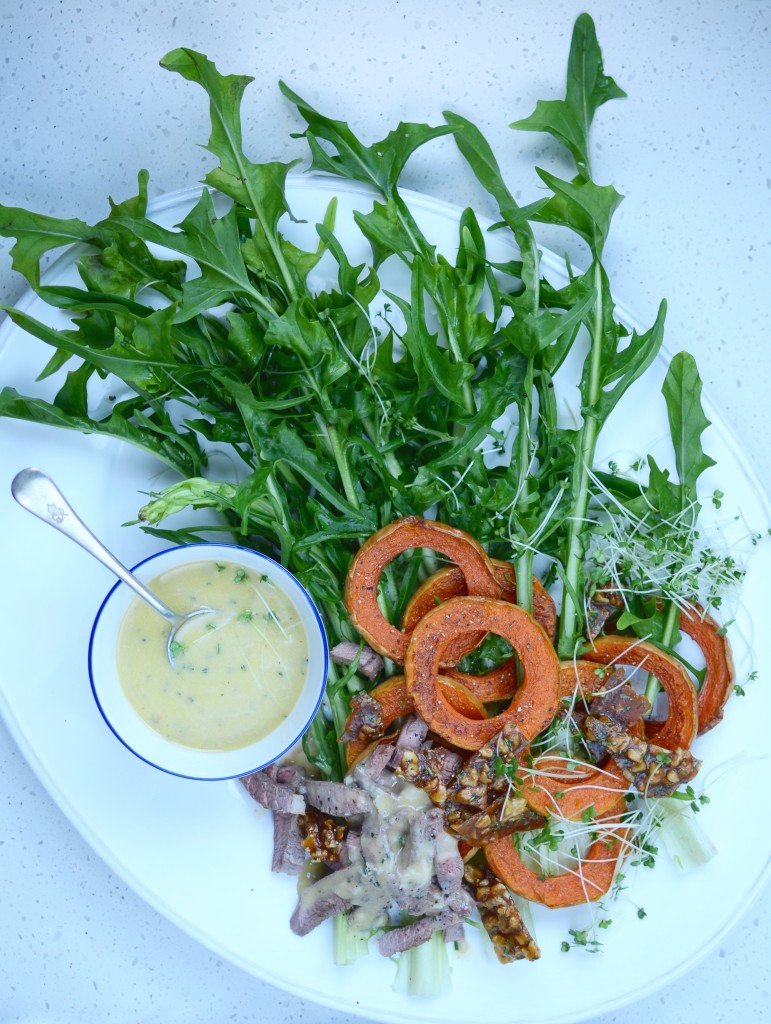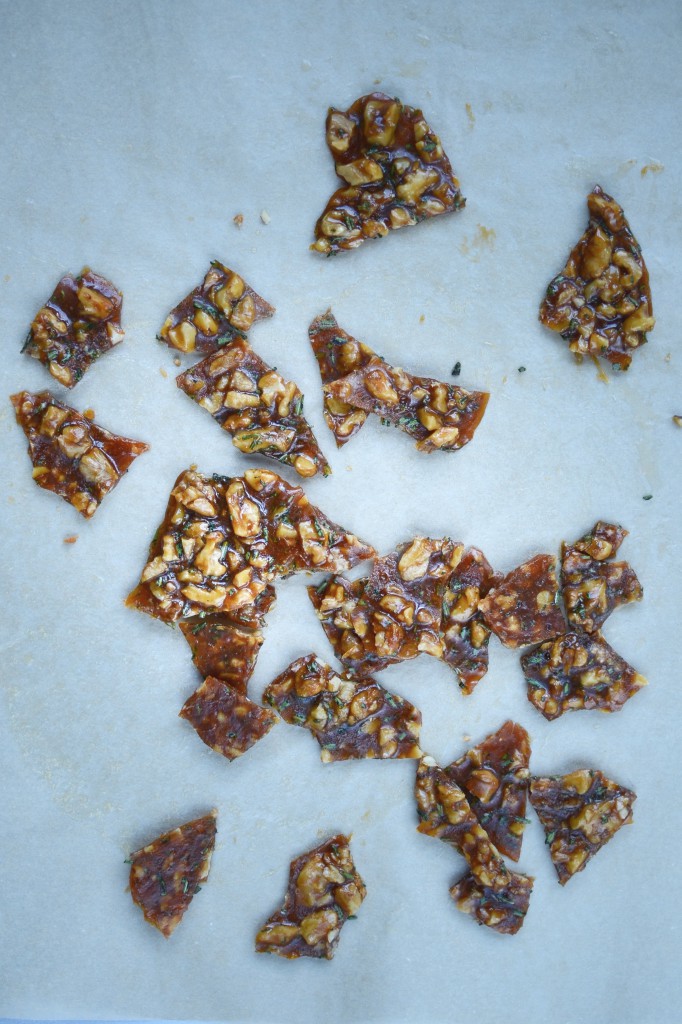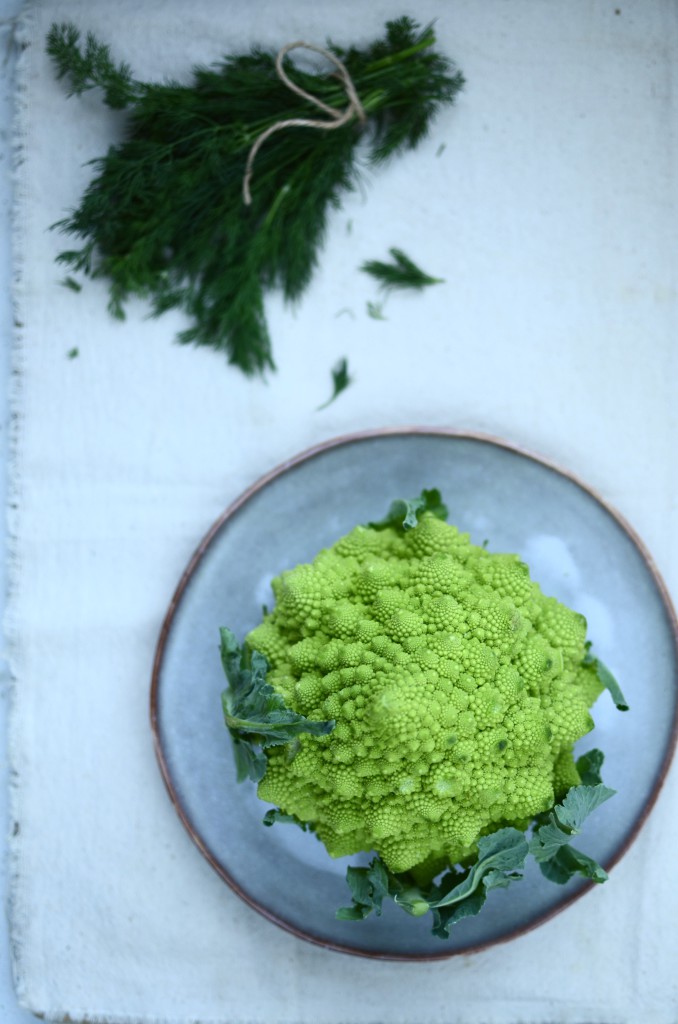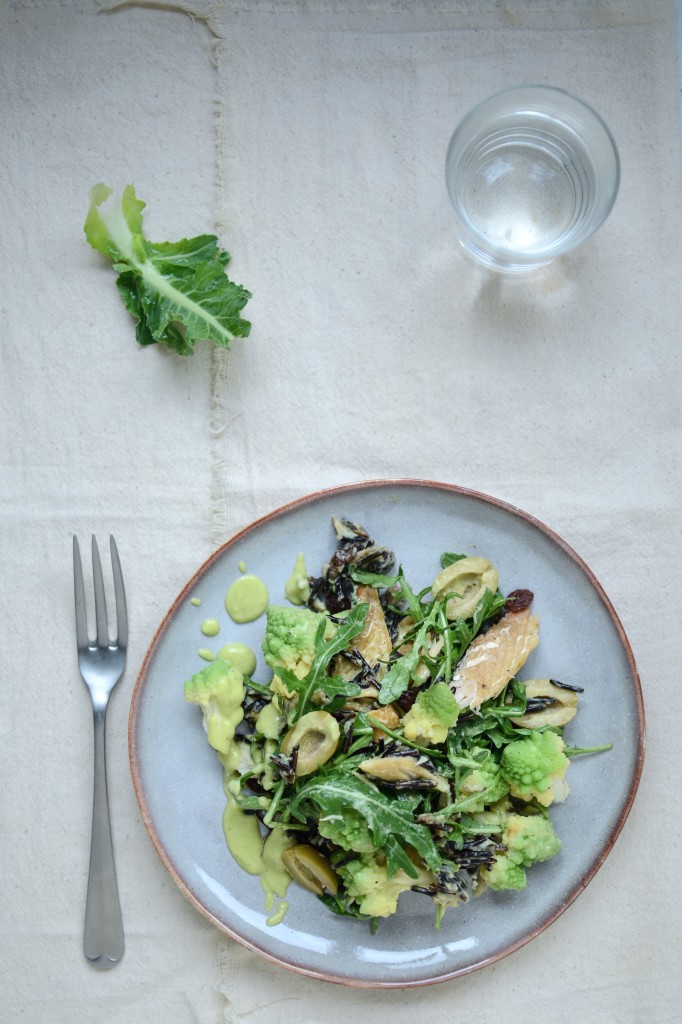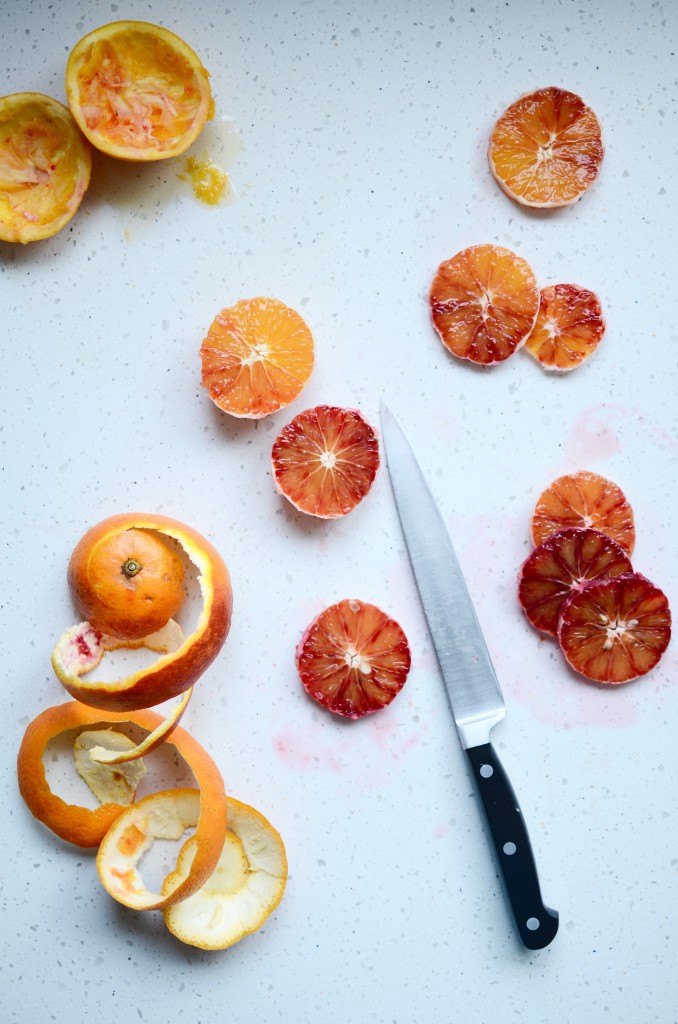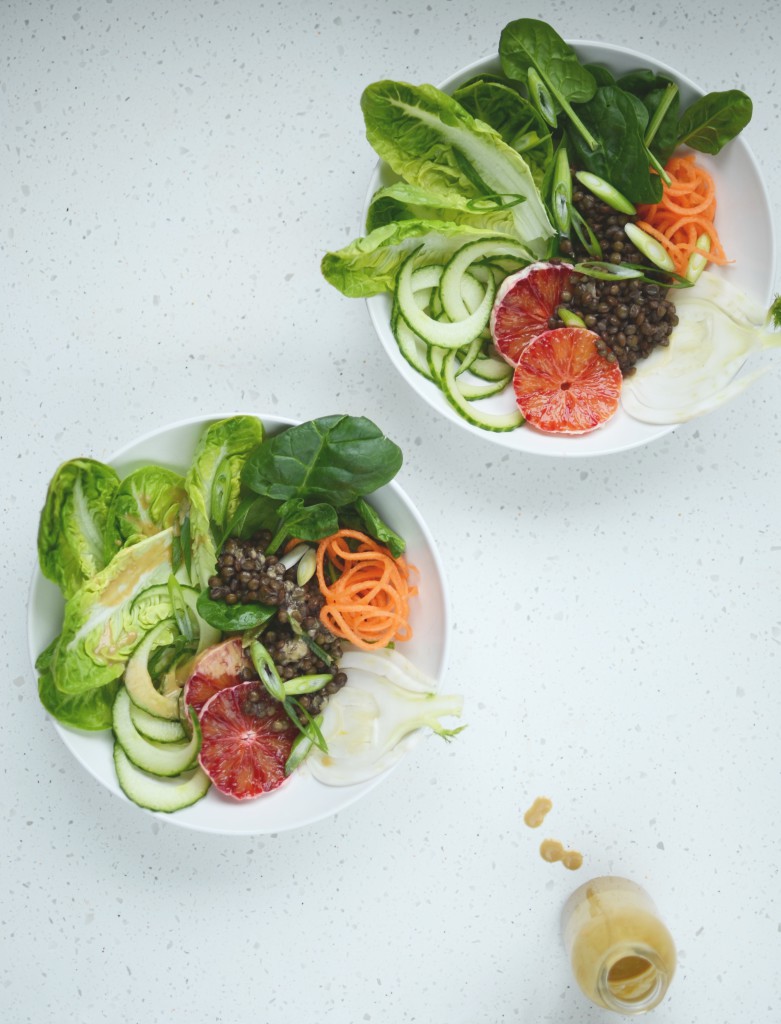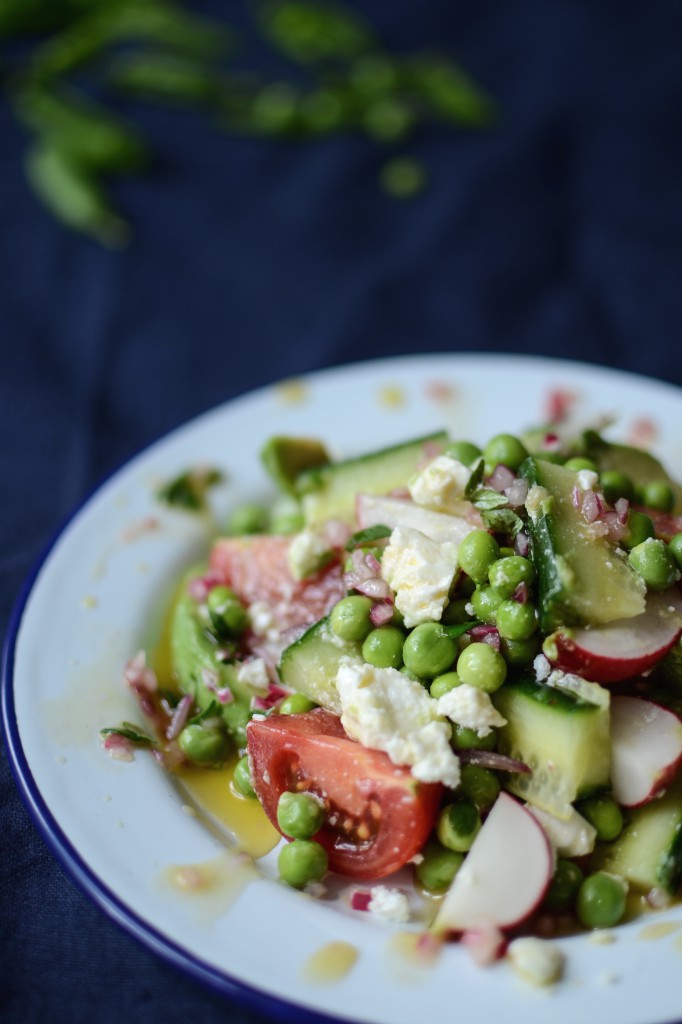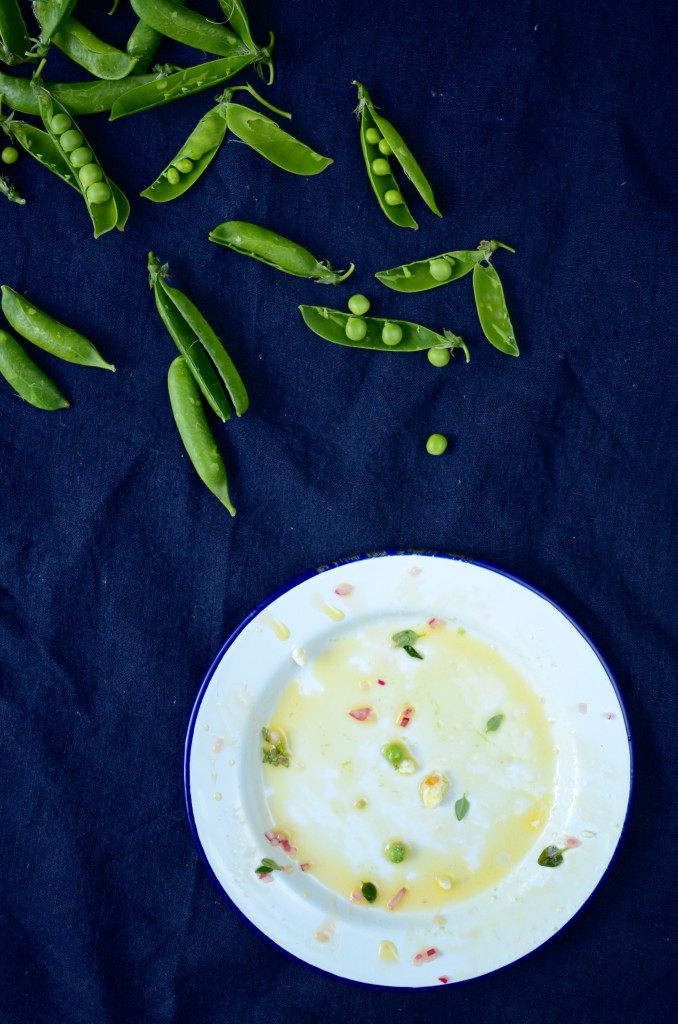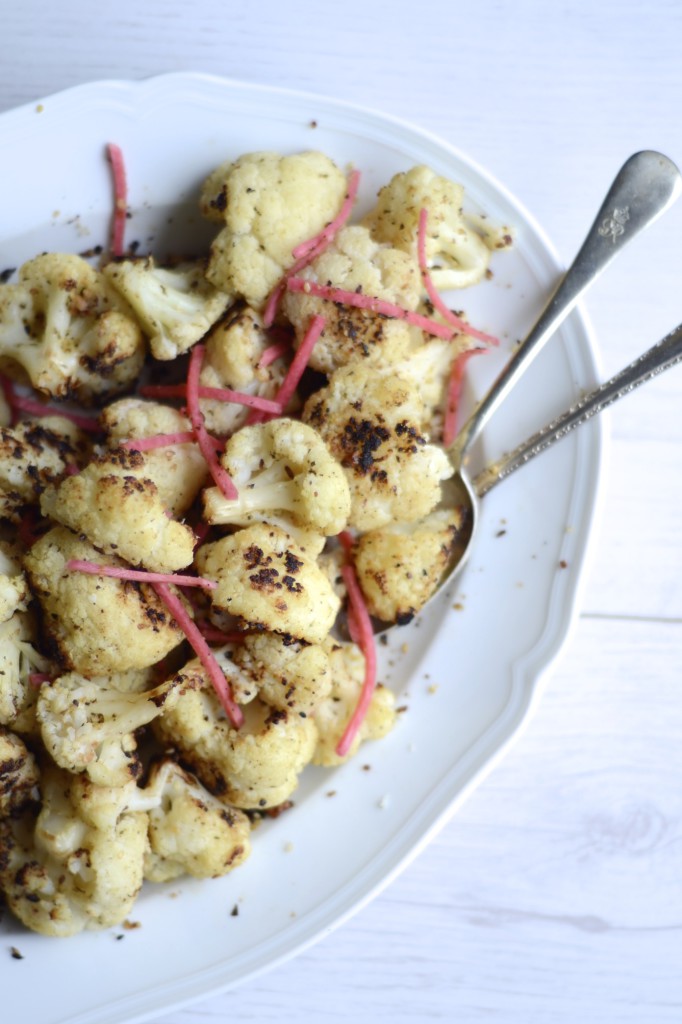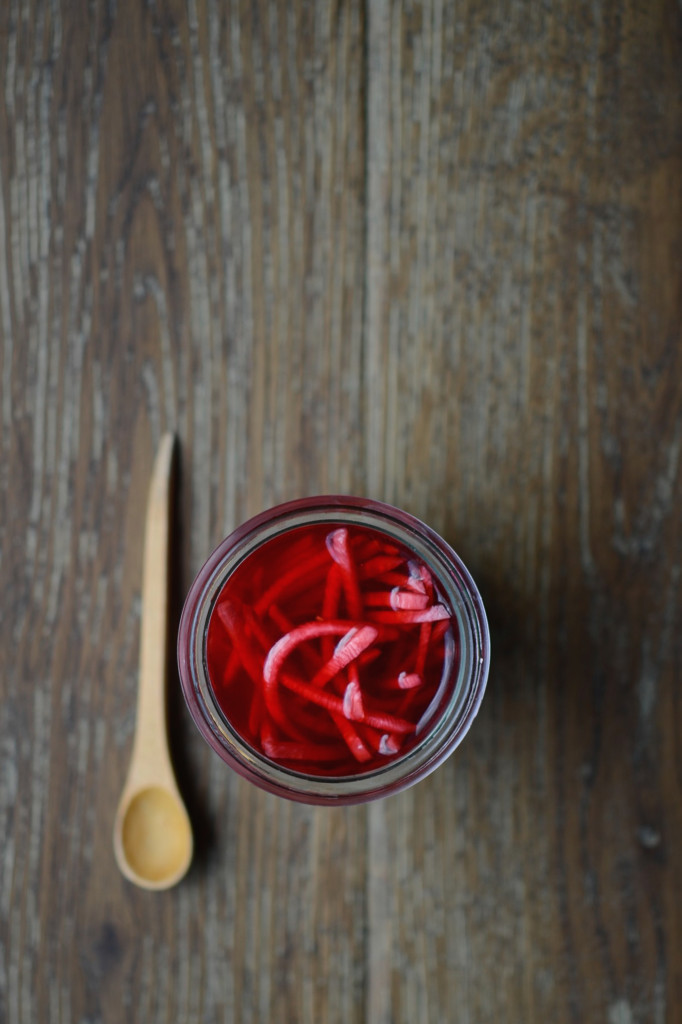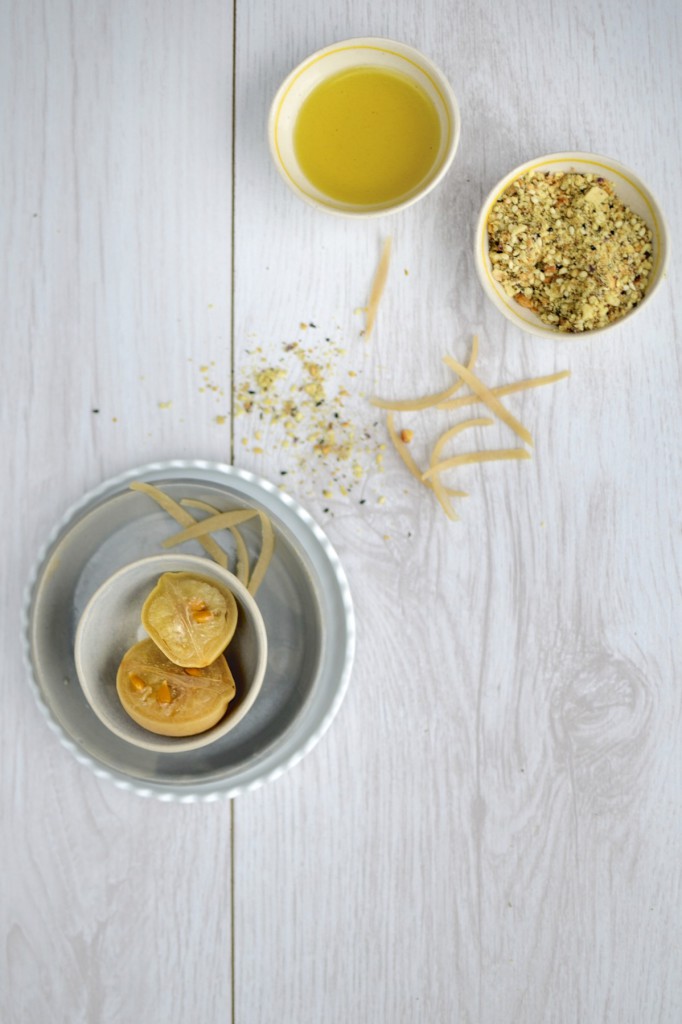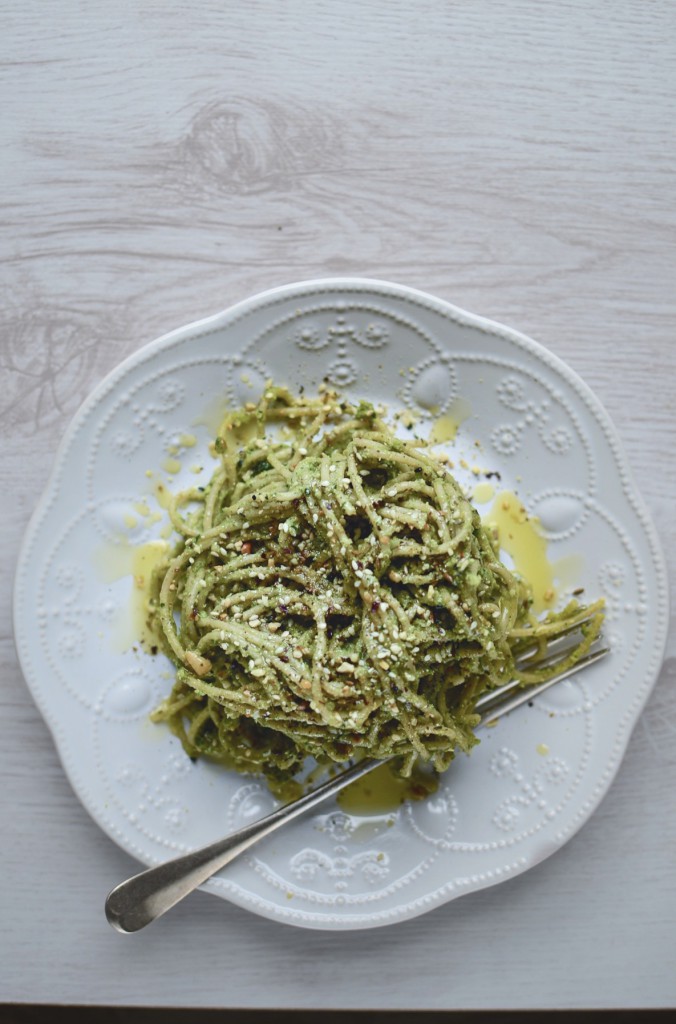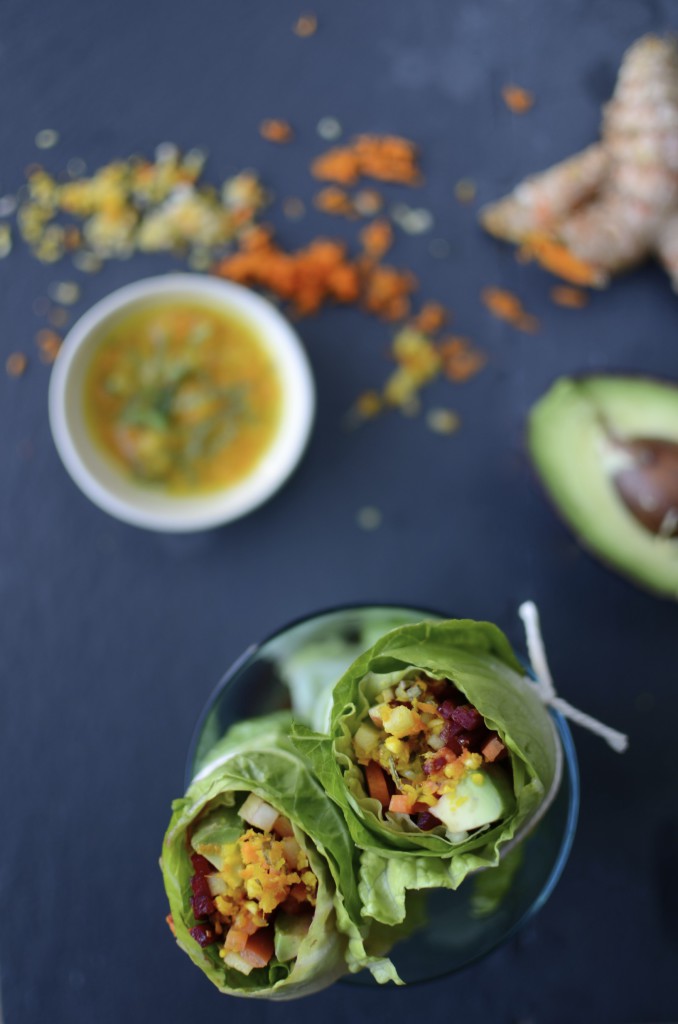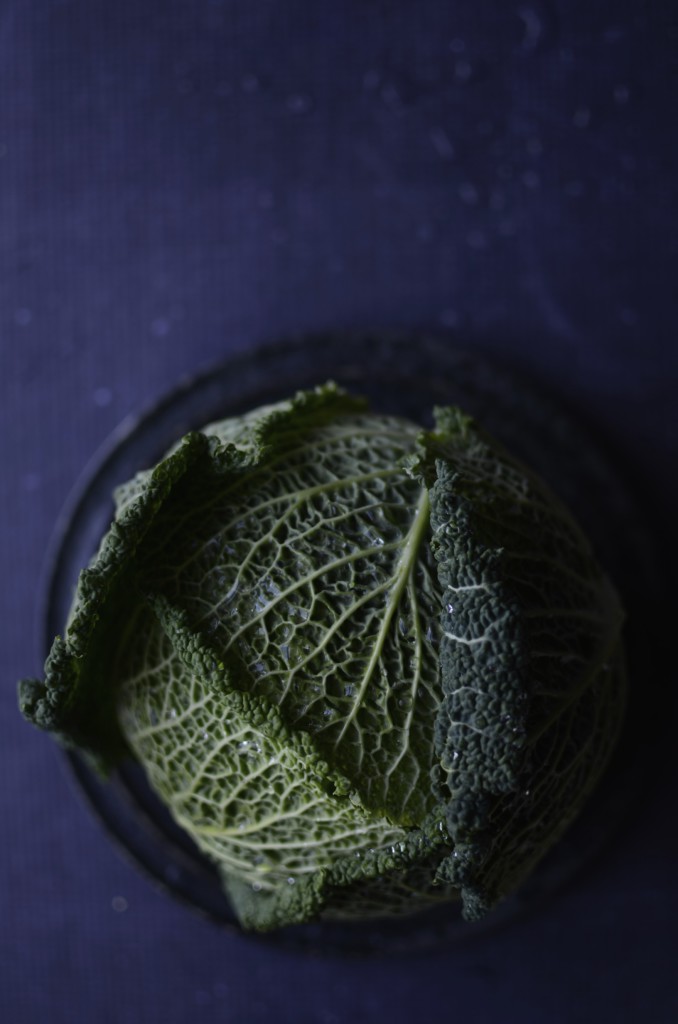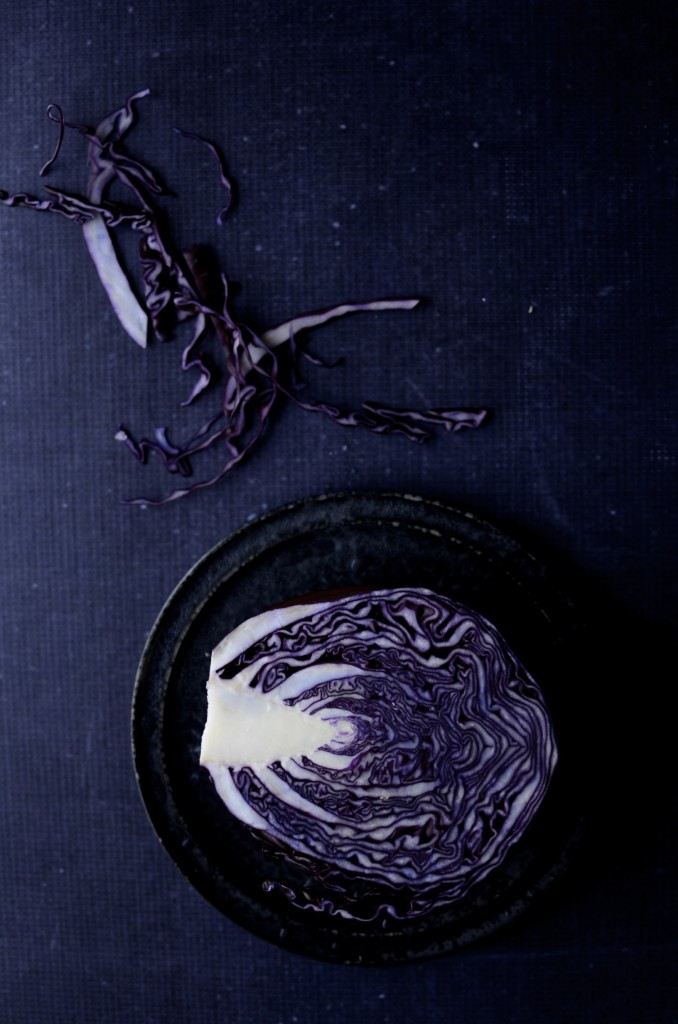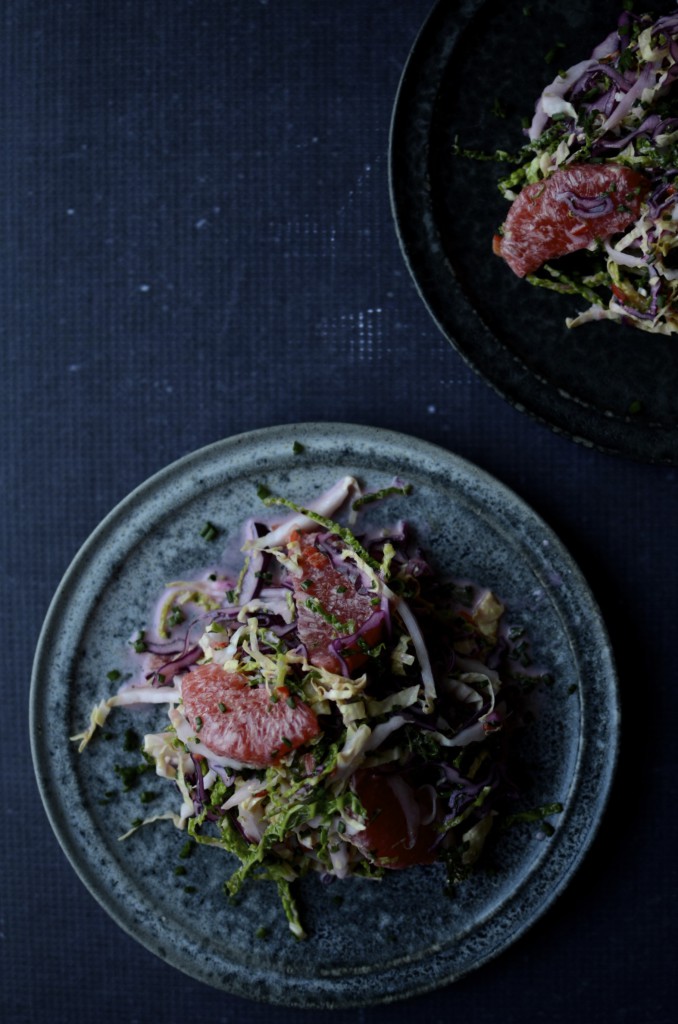Roasted pumpkin with green sauce
I spent some time in beautiful Hamburg in my early 20’s. My neighbour opposite was also a keen cook and I remember chatting to him about his favourite local dishes (his was Steckrübeneintopf). When he asked me whether there were any particular South African specialities I loved, it took about 1 second for “Pumpkin Fritters” to leave my mouth, a little more loudly than I had intended. He was horrified. “Pumpkin? That is what the pigs eat here in Germany…” Say what?! Naturally I rose to the challenge and, once I had finally sourced a pumpkin, made him some Pampoenkoekies. I believe he was a converted man.
This dish is a lovely make-ahead option for the colder months. Use whatever squash or pumpkin you have, but it is particularly delicious with sugar pumpkin. The green sauce is very moreish and good with any type of grain or pulse-based salad. It will thicken in the fridge, but just give it a good whisk and it should be pourable.
Roasted pumpkin with green sauce
Serves 4 – 6
Ingredients for the sauce
80ml (1/3 cup) coconut milk (if using organic, stand the tin in warm water to melt the fat)
30ml (2 tablespoons) lime juice (about 2 medium limes)
1/2 teaspoon unrefined salt
1/2 small avocado
Juice of 1 tangerine
1 spring onion
large bunch (100g) fresh coriander, leaves and stalks
medium bunch (50g) fresh mint, leaves only
1 teaspoon raw honey
1 green chilli (more or less to taste), seeds removed if you prefer it less spicy
For the rest
1 fennel bulb, the tough outer layer peeled (or a couple of stalks celery)
1 spring onion, finely sliced
3 cups cooked lentils and/ or quinoa
unrefined salt
crumbled goats cheese
roasted pumpkin (I used kabocha squash, but for an extra delicious option, try sugar pumkin)
toasted pumpkin seeds
Method
- Put all the ingredients for the dressing in a blender and blend until smooth. Set aside.
- Separate the layers of the fennel bulb, then chop into small squares. Sauté in a little coconut oil until tender.
- Combine the fennel with the rest of the ingredients, dress with the dressing and serve.
Strawberry and tomatillo salsa
Tomatillos look like little green tomatoes but are, in fact, related to the cape gooseberry (or physalis). They are a staple in Mexican cooking, and with their tart, refreshing taste, make a great addition to all kinds of dishes, especially salsa verde. Once you’ve removed the husk, rinse them well as they are sticky, then chop or blend and add to guacamole, or cook it down with red onion and chilli for the most delectable sauce. I received mine with my weekly Riverford Organic box, but you could also try online grocers specialising in Mexican ingredients.
Strawberry and tomatillo salsa
Delicious with a Mexican-inspired barbecue or grilled fish, this salsa is a lovely alternative to your regular tomato version. Make sure your strawberries are super sweet – the salsa needs it. Tomatillos are a good source of niacin, potassium, and manganese, and are very rich in vitamin C and vitamin K. They also contain iron, magnesium, phosphorus, and copper.
Serves 4 – 6
Ingredients
juice of 1 lime
large pinch of sea salt
1 teaspoon raw honey
1/2 red onion, finely diced
200g tomatillos, finely chopped
400g strawberries, hulled and quartered
small bunch fresh coriander, finely chopped
1 – 2 red or green chillies, chopped (deseeded if preferred), optional
Method
- Whisk together the lime juice, salt and raw honey. Then add the onion and set aside.
- Prepare the rest of your ingredients, then toss with the dressed onions and serve.
Melon and avocado poke
This is refreshing and utterly summery. Unlike the British weather. (Here’s hoping the guys at the met office are right about that heat wave…) Poke (pronounced poke-keh) is a Hawaiian staple and can be found in many different guises, with chunks of tuna marinated in soy being the most popular and ubiquitous. This is a meat- and fish-free version and something I love eating whilst sat on my garden chair with the sun kissing my toes. It serves 4 as a starter, but I often eat the entire bowlful for lunch. Whatever you do, only attempt this if you can get your hands on seriously good melons.
Melon & avocado poké with nori crisps
Serves 4 as a starter
Ingredients for the nori crisps
2 sheets nori
white sesame seeds
sesame oil
sea salt
Ingredients for the dressing
15ml (1 tablespoon) extra virgin olive oil
5ml (1 teaspoon) rice wine vinegar
5ml (1 teaspoon) toasted sesame oil
15ml (1 tablespoon) tamari
30ml (2 tablespoons) lemon juice
1/2 – 1 teaspoon raw honey
1 teaspoon each of white and black sesame seeds, plus more for garnish
pinch of dried chilli flakes (or to taste)
1 shallot, very finely chopped
1 large clove garlic, finely chopped
Ingredients for the poké
500g (3 1/2 cups) diced watermelon (or a mixture of melons)
2 ripe avocado, cut into small dice
large handful sugar snap peas, thinly sliced lengthways
1 spring onion, finely sliced
sea salt
Method
- For the nori crisps: Preheat the oven to 140°C (275°F). Line a large baking sheet with parchment paper and set aside. Place two sheets of nori, shiny side up, on a chopping board. Using a pastry brush, lightly brush one sheet with water, then press the other one firmly firmly on top to stick the two together.
- Now brush the uppermost sheet with sesame oil, sprinkle on some sea salt and sesame seeds, and using scissors or a sharp knife, cut the nori into thin strips.
- Arrange the strips in a single layer on the baking sheet and bake for 15 to 20 minutes or until they have turned crispy and dark green. Remove from the oven and allow to cool.
- For the dressing: Combine all the ingredients in a jar and give it a good shake. Taste and adjust seasoning.
- To serve: Gently toss together the melon and other poké ingredients with the dressing and serve immediately topped with nori crisps.
Lamb steak, puntarelle and rosemary brittle
I love the Italians! Not only do they know how to live passionately, but they also rock on the green vegetable front, especially when it comes to bitter greens. One of my favourites is puntarelle or catalogna – a loose leafed variety of chicory favoured by most Romans, also referred to as Catalonian or asparagus chicory. The word “puntarelle” actually refers to the pale green inner stalks that have asparagus-like tips, whilst the outer leaves are similar to dandelion both in taste (they are very bitter!) and appearance. If you would like a step-by-step tutorial on how to prepare this vegetable, Nick Anderer explains it all here. For a quick overview, I’ve included the steps below. This fabulous vegetable is only in season in the colder months, but with Easter a little earlier than usual, perhaps this salad will still be a possible addition to your festive feast! It will be equally good with dandelion greens, chicory and radicchio, however, if you cannot find puntarelle.
Lamb steak, puntarelle and rosemary brittle
Ingredients for the salad
2 lamb steaks
splash of extra virgin olive oil
2 – 3 sprigs of rosemary
2 – 3 large garlic cloves, peeled and sliced
1 butternut or coquina squash, cut into rings and roasted until tender
1 head of puntarelle
Ingredients for the brittle
85g (just under 1/2 cup) unrefined brown sugar
50g (1/2 cup) chopped walnuts
15g (1 tablespoon) unsalted butter
1 tablespoon finely chopped fresh rosemary
1/2 teaspoon course ground sea salt
Ingredients for the dressing
2 cloves garlic
1/2 teaspoon coarse sea salt
1 tablespoon finely chopped fresh rosemary
5 – 6 marinated anchovies, drained
30ml (2 tablespoons) mayonnaise (preferably home-made)
80ml (1/3 cup) extra virgin olive oil
30ml (2 tablespoons) fresh lemon juice
Method
- Rub a little olive oil into the meat, then place into a shallow glass dish and press the rosemary and garlic on top. Allow to marinade for a couple of hours, then remove the rosemary and garlic, season with salt and pepper, and fry on a griddle until cooked to your liking. Set aside to rest for 10 minutes before slicing.
- For the puntarelle:
- Fill a large bowl with ice water and set aside. Strip away the dark green outer leaves – you will only need a handful of these to add to the salad. Use a sharp paring knife to separate the pale green core into its individual stalks, then thinly slice each lengthwise before dropping the slivers into the ice water. They need to soak for at least 45 minutes to achieve the traditional curly crispness that puntarelle is loved for.
- For the brittle:
- Line a large baking sheet with greaseproof paper.
- Place the sugar in a medium heavy saucepan over medium high heat and stir with a wooden spoon until sugar begins to melt. Lower the heat a little and keep stirring until all the sugar has melted.
- Now leave it to cook untouched until it is a dark caramel colour – you should be able to smell it. Stir in the walnuts and butter, and allow to cook for another couple of minutes, stirring constantly, or until the butter is incorporated.
- Stir in the rosemary and salt, then scrape the mixture out onto the prepared baking sheet. Spread it evenly to the desired thickness with a wooden spoon or stiff rubber spatula. Allow to cool completely (roughly one hour) then break it into pieces. You will probably have slightly more than you need for this salad, but the rest can be stored in an airtight container at room temperature and will keep a few days.
- For the dressing:
- Place the garlic and coarse salt in a mortar and grind into a paste.
- Add the rosemary and continue to grind until it is well mixed and resembles a speckled pulp.
- Add the anchovies and repeat until you have a thick paste.
- Now slowly whisk in the olive oil until it is incorporated, followed by the mayonnaise and lemon juice.
- To assemble your salad, combine the sliced lamb, roughly chopped puntarelle greens, drained and dried puntarelle stalks and roasted squash, and toss with enough dressing to coat. Scatter over the brittle and serve immediately.
Mackerel and romanesco with preserved lemon
Writing a book about greens has helped me rekindle relationships with some vegetables that I have neglected somewhat, such as this little beauty, the romanesco. It looks like the strange yet stunning lovechild of Mr Broccoli and Ms Cauliflower, but is indeed a unique Italian variety of broccoli that develops multiple compact heads that can be individually snapped off. Each bud is composed of a series of smaller buds, all arranged in a logarithmic spiral, and this pattern continues at several smaller levels. To retain the gorgeous green hue after blanching or steaming, be sure to shock the florets in ice cold water. Nutritionally, romanesco is rich in vitamin C, vitamin K, dietary fiber and carotenoids.
Mackerel and romanesco with preserved lemon dressing
Serves 4
Ingredients for the salad
85g (1/2 cup) wild rice, rinsed, soaked in fresh water overnight and cooked until tender
3 smoked mackerel fillets, skin discarded and flaked
one large handful of rocket per person
150g large green olives, pitted and halved
45g (a heaped 1/4 cup) organic raisins
1 small head of romanesco, cut into florets and lightly steamed until tender, then shocked under ice cold water (90g reserved for dressing)
Ingredients for the dressing
2 small preserved lemons, pulp discarded and peel roughly chopped (about 2 tablespoons)
90g (about 3/4 cup) cooked romanesco
125ml (1/2 cup) extra virgin olive oil
45ml (3 tablespoons) lemon juice
1 – 2 teaspoons Dijon mustard
2 – 3 teaspoons raw honey
2 tablespoons fresh thyme leaves
small bunch of dill
freshly ground black pepper
sea salt to taste
Method
- Put all the ingredients for the dressing in a blender and blend until smooth and creamy. Set aside.
- Combine all the salad ingredients, season with salt and gently toss with enough dressing to coat.
Note: It is possible to enjoy wild rice – the seed of an aquatic grass and not a grain at all! – in its raw form, if you allow it to sprout (or “bloom”). Rinse the rice well, then soak in fresh water for 2 to 3 days, changing the water twice daily. You will know it is ready when most of the rice kernels have split open and are soft.
A winter salad with blood orange and lentils
I’m not sure that I agree with a strict interpretation of the whole “New Year Detox” thing. At least not if you live in the Northern hemisphere. Sure, cut down on portion sizes and avoid sweet things if you overdid it during the festive season. But why deny yourself warming, filling and indulgent food when it is bound to be cold, dark and wet most of the time? And on the days you do crave something a little fresher, a little bit brighter, a salad such as this one will hit the spot while keeping the winter chills at bay.
Blood oranges are such a treat in the colder months and add a sense of drama to any dish. Before juicing the halves for the dressing, I cut off one slice and add this, with the skin still on, to the blender. This, and the tahini, add a delicious bitterness to the salad, which I find particularly appealing, but feel free to omit it. If you struggle to find the shichimi togarashi spice blend for the dressing, you could make your own by combining 2 tablespoons of chilli flakes, 1 teaspoon coarsely ground sichuan (or black) peppercorns, a tablespoon each of white and black sesame seeds, and dried tangerine or orange peel, 2 teaspoons of ground ginger, and lastly 2 tablespoons of seaweed (nori, wakame flakes or arame). Also remember, when consuming raw spinach, to include foods in the meal that are high in vitamin C (such as blood oranges), as it helps with assimilation of the iron and blocks the oxalate from binding to calcium, encouraging further absorption.
Lentil and blood orange salad
Serves 2 – 4
Ingredients for the dressing
1 blood orange, 1 slice and the rest juiced
80ml (1/3 cup) extra virgin olive oil
15ml (1 tablespoon) tahini
30ml (2 tablespoons) rice vinegar
15ml (1 tablespoon) naturally fermented shoyu or soy sauce
1 tablespoon maple syrup
squeeze of lemon
pinch of sea salt
shichimi togarashi (Japanese 7-spice blend) to taste
Ingredients for the salad
100g (about 1 cup) cooked puy lentils
2 large handfuls of greens, including baby spinach
1/2 large cucumber, sliced
2 blood oranges, peeled and sliced
1 large carrot, grated or thinly sliced
1/2 medium fennel, grated or thinly sliced
2 spring onions, thinly sliced
Method
- Blend together all the dressing ingredients. If you don’t own a high-speed blender, do not add a slice of orange with the peel on, as it will not be ground up smoothly enough. Instead, add some grated zest. Adjust seasoning, ensuring a lovely balance between salty, bitter, sweet and sour.
- Just before serving, toss together the warm lentils, the rest of the salad ingredients and enough dressing to coat.
Freshly podded pea salad
There is nothing quite like freshly podded peas in the early summer months. They are sweet, crunchy and utterly delightful. My little ones adore the process of shelling the peas and then popping them in their mouths, one by one. But don’t let the taste and sensory delight be the only reason you add these tiny gems to your meals. Green peas are rich in protein, fibre, vitamins A, B, C, E & K, and anti-oxidants. They also contain a number of anti-inflammatory phytonutrients not found anywhere else. Later in the season the peas become bigger and starchier, so no longer ideal as a raw snack, but still a wonderfully tasty and nutritious ingredient in many cooked dishes such as minestrone or wilted lettuce.
Serves 2 – 4
Ingredients for the dressing
15ml (1 tablespoon) red wine vinegar
45ml (3 tablespoons) extra virgin olive oil
1 tablespoon finely chopped red onion
1 tablespoon tender thyme leaves
generous pinch of sea salt
Ingredients for the salad
140g (just under a cup) freshly podded peas (about 400g of peas in the pods)
4 vine-ripened capri tomatoes, quartered
1/4 English cucumber, cut into chunks and then sliced
4 large radishes, quartered
1 small ripe avocado, sliced
60g sheep or goat milk feta, crumbled
Method
- For the dressing: put all the ingredients into a small jar, screw on the lid and give it a good shake. Set aside.
- Combine all the ingredients for the salad in a medium mixing bowl, sprinkle a little sea salt on the avocado slices, then pour over about half to 2/3 of the dressing and toss gently. Serve immediately.
Two ways with roasted cauliflower
For Mother’s Day last year, my eldest son completed the sentence “I love my mummy because…” in the communal class card with “she makes me roasted cauliflower – my favourite!” – a statement that was endearing and cringe-worthy in equal measure. I could just imagine other parents rolling their eyes and wanting to gag, but the truth of the matter is that roasted cauliflower really IS his favourite food, and I am happy to indulge his love often. Here are two easy ways to enjoy this delicious brassica: with pickles or with pasta.
Raw pickled watermelon radishes
Ingredients
2 medium watermelon (also known as roseheart or red meat) radishes, scrubbed and sliced into thin discs or matchsticks
125ml (1/2 cup) water, preferably filtered
125ml (1/2 cup) apple cider vinegar, preferably unpasteurised such as this one or this one
30ml (2 tablespoons) honey, preferably raw
1 heaped teaspoon sea salt
large pinch of red chilli flakes
1/2 teaspoon black peppercorns
Method
- Pack the radish slices or matchsticks into a medium canning jar or glass container with lid, that you have either washed in the dishwasher or rinsed with boiling water.
- Whisk together the rest of the ingredients until honey and salt are dissolved, and pour over the radishes. Seal with the lid and place in a cool place or the fridge for at least 24 hours before tasting.
- They will remain crunchy for only a few days, but keep well for several weeks in the fridge.
- Serve with roasted cauliflower or mixed into salads, on sandwiches and with cheese.
Roasted cauliflower and chard pasta
Serves 6
Ingredients
1 small head cauliflower, trimmed and separated into florets
1 medium onion, chopped
200g Swiss chard, trimmed, stalks finely chopped and leaves roughly chopped
2 cloves garlic, chopped
2 – 3 preserved lemons (depending on their size), flesh discarded and finely chopped
linguini or spaghetti for 6 people (I like wholemeal spelt or gluten-free quinoa pasta)
sea salt
black pepper
1 tablespoon hazelnut and chickpea dukkha per person to serve
extra virgin olive oil
Method
- Preheat the oven to 160°C/320°F. Toss the cauliflower florets with some salt and coconut or olive oil, and roast until golden and tender (about 50 minutes to an hour), turning at least once.
- While the cauliflower is roasting, bring a large pot of water to boil and add the pasta. Cook at a gentle simmer until just tender (al dente). Drain, reserving some of the cooking liquid for the sauce, and toss with sea salt and olive. Set aside.
- While the pasta is cooking, sweat the onion and the chard stalks with a large pinch of salt in some olive oil over a gentle heat. Once softened, add the garlic and a few minutes later the chard leaves. As soon as they have wilted, remove from heat and set aside.
- When the cauliflower is cooked, pour some of the pasta cooking liquid into a blender or food processor, then add the roasted cauliflower, chard mix and preserved lemon peels. Blend until smooth, adding a little more liquid as necessary. Adjust seasoning and stir into the cooked pasta with most of the dukkha. Add a generous glug of olive oil and divide between 6 pasta bowls. Sprinkle over the rest of the dukkha and serve hot.
The New Year Reboot Roll
Take a look at my guest post on the Natural Gourmet Institute’s blog for instructions on how to make these guys… Oh – and happy 2015 everyone!
Three cabbage slaw and a Christmas wish
I do have a Christmas wish that does not involve world peace, well-behaved children or the Myla Arietta playsuit. It is to sit down at a beautiful, heavily laden Christmas table that I did not have to lift a finger to prepare. Ahhhh. Usually this is THE time of year for me. I love cooking festive dishes and I absolutely love planning for it. But I have had a pretty busy 12 months and Chopper, my trusty chef’s knife, needs a break. But before that happens, here is a sassy little recipe for you. It might even make it on to your Christmas menu…
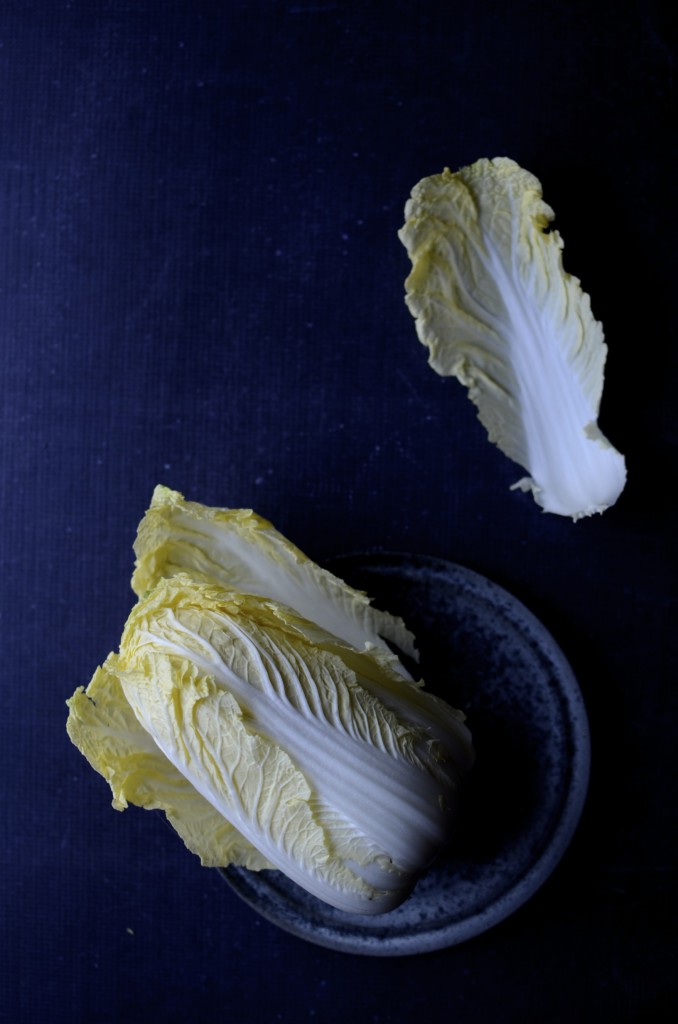 Health-supportive cabbages can be harvested throughout the year and there are many different varieties. They are delicious raw, stir-fried, braised, steamed, grilled and wrapped around different morsels. Short cooked or raw cabbage, especially Savoy cabbage, is a very good source of sinigrin, a glucosinolates (a natural component of many pungent plants such as mustard, cabbage and horseradish) that can be converted into allyl-isothiocyanate (or AITC), a colourless oil that is responsible for the pungent taste of plants such as radishes and which has shown unique cancer preventive properties with respect to bladder cancer, colon cancer, and prostate cancer. Don’t let that be the only reason to have this salad, though. It is quick and easy to prepare and adds a hit of freshness to any meal.
Health-supportive cabbages can be harvested throughout the year and there are many different varieties. They are delicious raw, stir-fried, braised, steamed, grilled and wrapped around different morsels. Short cooked or raw cabbage, especially Savoy cabbage, is a very good source of sinigrin, a glucosinolates (a natural component of many pungent plants such as mustard, cabbage and horseradish) that can be converted into allyl-isothiocyanate (or AITC), a colourless oil that is responsible for the pungent taste of plants such as radishes and which has shown unique cancer preventive properties with respect to bladder cancer, colon cancer, and prostate cancer. Don’t let that be the only reason to have this salad, though. It is quick and easy to prepare and adds a hit of freshness to any meal.
Three cabbage slaw
Serves 2
Ingredients for the dressing
1 tablespoon mayonnaise, preferably home-made
1 tablespoon grapefruit juice (reserved after segmenting the grapefruit)
1 teaspoon Dijon mustard
sea salt
1 tablespoon minced chives
1 tablespoon extra virgin olive oil
maple syrup to taste
Ingredients for the slaw
1 handful finely shredded red cabbage
1 handful finely shredded Savoy cabbage
1 handful finely shredded Chinese or Napa cabbage
1 grapefruit, segmented with a sharp knife
1 chilli, finely chopped (remove seeds and membranes if you prefer it milder)
Method
- Scoop the mayonnaise into a small bowl and add the rest of the ingredients while stirring.
- Adjust seasoning.
- Toss all the salad ingredients together and dress just before serving.
If you have started thinking about your Christmas menu, allow me to suggest a few things:
- make to do lists and even consider marking important “deadlines” in your calendar – it sounds a little OCD, but it avoids last-minute dashes to the store and ensures your best chances of serving truly festive fowl
- choose as many dishes as possible that can be partly or wholly prepared ahead and remember that not EVERYthing has to be home-made
- on the night, set up a bar for guests to mix their own cocktails and be sure to serve yourself too
- have a plan ready for the leftovers and hand it over to the rest of the family on Boxing Day while you put up your feet for a well-deserved break

